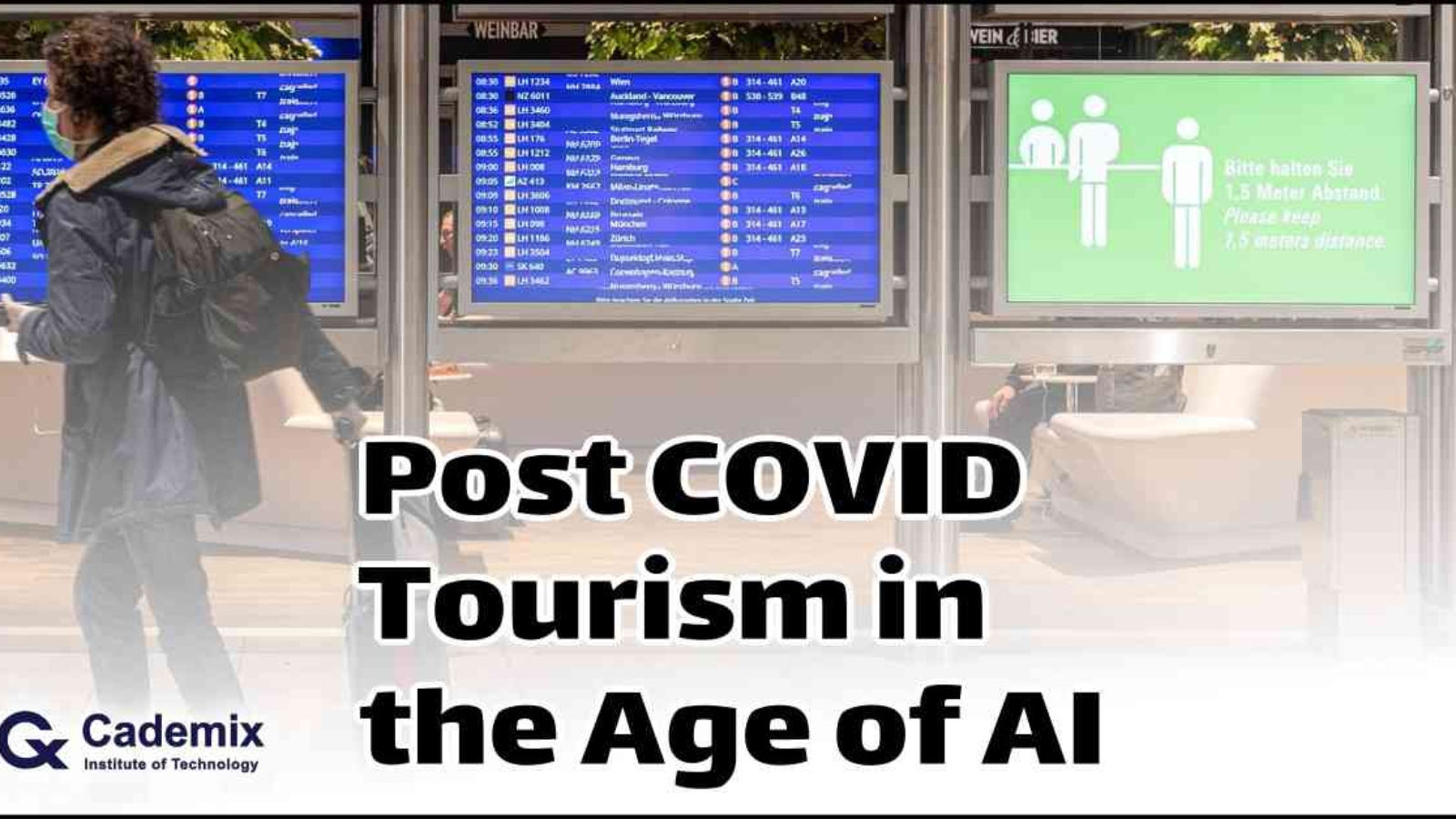The COVID-19 pandemic has brought significant challenges to the tourism industry in Europe. To adapt to the new normal and ensure the safety of visitors, tourist destinations are turning to artificial intelligence (AI) to transform tourist management. This article explores the revolutionary role of AI in post-COVID tourism and how it is changing the way tourist destinations are managed in Europe. The article covers the latest advancements in AI, such as smart homes, monitoring tools, and chatbots, and how they are improving communication, marketing, and the quality of tourist attractions. The article also highlights how AI is helping tourist destinations become more efficient, sustainable, and accessible in the age of post-COVID tourism.
By Samareh Ghaem Mghami and Javad Zarbakhsh, Cademix Institute of Technology
Keywords: Post-COVID Tourism, AI, Tourist Management, Europe, Smart Homes, Monitoring Tools, Chatbots, Communication, Marketing, Tourist Attractions, Efficiency, Sustainability, Accessibility.
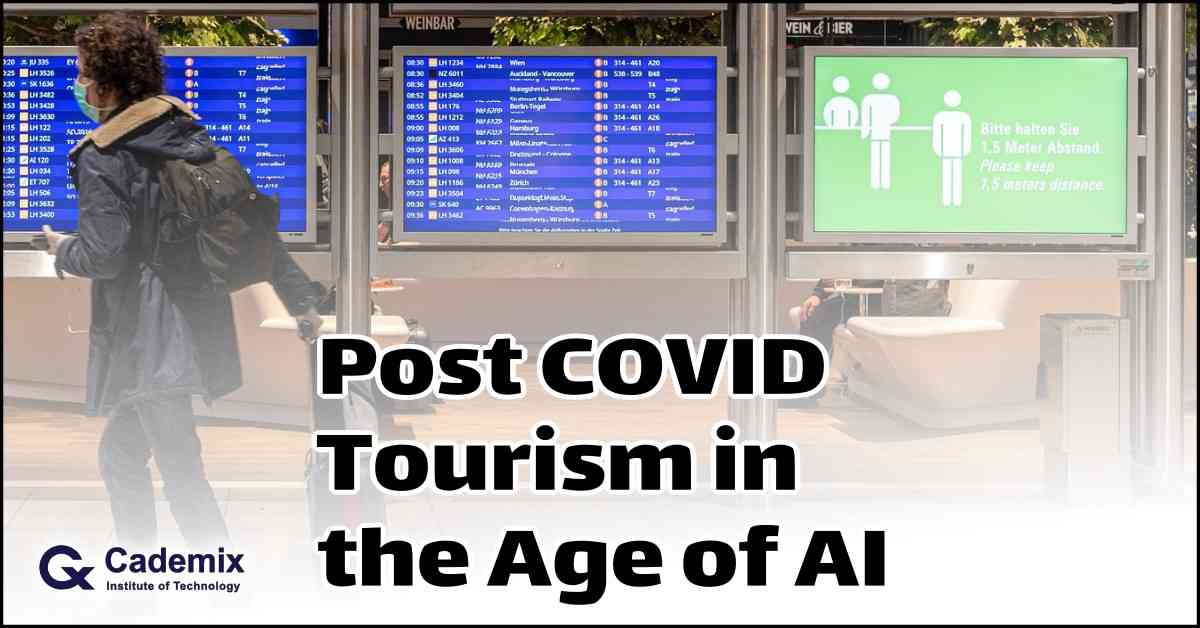
Introduction
The tourism industry is a critical sector for the European economy, providing millions of jobs and generating significant revenue. However, the COVID-19 pandemic has had a profound impact on the industry, with many destinations experiencing a sharp decline in tourism activity. In response, the industry has been forced to adapt and find new ways to attract and retain customers. One technology that holds great promise for the tourism industry is artificial intelligence (AI), which has the potential to transform every aspect of the tourist experience. AI can help destinations manage their resources more effectively, offer personalized services, and improve customer satisfaction. Additionally, AI can help the industry recover from the effects of the pandemic by providing innovative solutions to the challenges it faces.
AI is already being used in the tourism industry in many ways, including chatbots that help customers with their travel arrangements, facial recognition systems at airports to speed up security checks, and personalized recommendations for hotels, restaurants, and other attractions. As AI technology continues to improve, its potential for the tourism industry will only grow. For example, AI can help destinations manage their resources more effectively by analyzing data on visitor behavior and predicting demand for different services. This can help optimize the use of resources such as energy, water, and transportation. Additionally, AI can offer personalized services to tourists by analyzing their preferences and offering tailored recommendations. This can help increase customer satisfaction and loyalty, leading to repeat business and positive word-of-mouth advertising. Overall, AI has the potential to transform the tourism industry, creating new opportunities for growth and innovation in the post-COVID era.
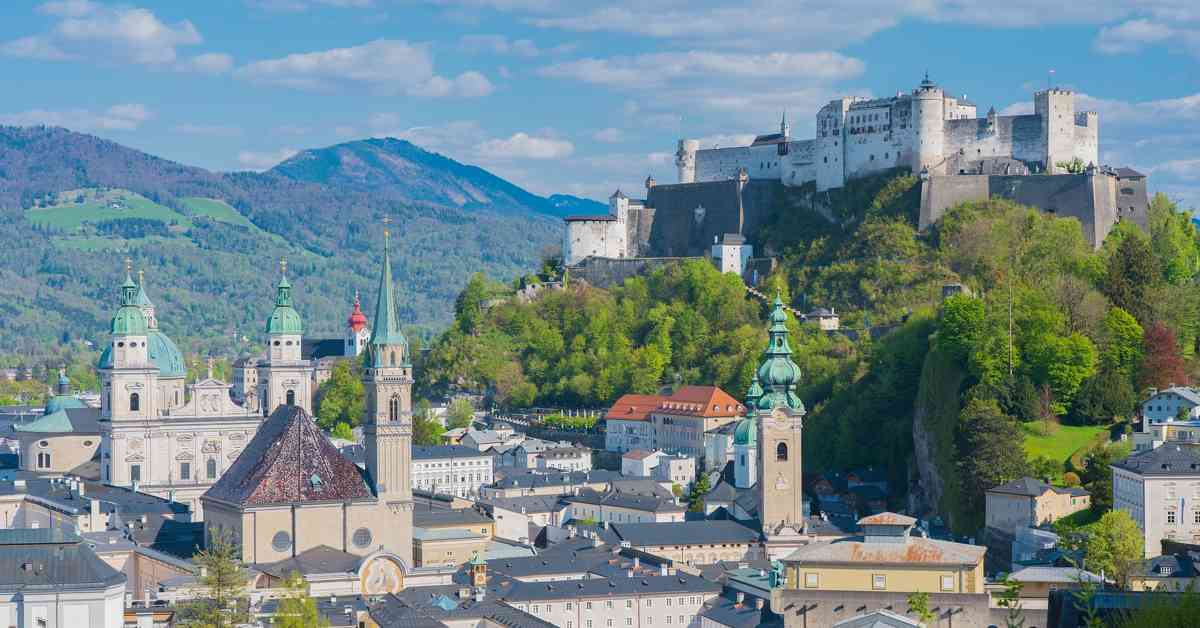
Transforming Tourism Management with AI in the Age of Post-COVID Tourism
The use of AI in post-COVID tourist management is rapidly changing how destinations are managed across Europe. One of the most significant benefits of AI is its ability to collect, analyze, and make sense of vast amounts of data in real time, enabling faster and more informed decision-making. This is especially important in the post-COVID era, where destinations must adapt quickly to changing circumstances and ensure the safety of visitors.
AI can help tourist destinations become more efficient, sustainable, and attractive to visitors in the age of post-COVID tourism. For instance, in Spain, AI is being used to monitor and manage tourist flows, helping to alleviate overcrowding and maintain physical distancing. In Italy, AI-powered chatbots are being used to help tourists plan their trips, answer questions, and provide personalized recommendations while minimizing physical contact. In France, AI is being used to optimize energy use in hotels and other tourist facilities, reducing costs and lowering carbon emissions while ensuring a safe and comfortable environment for visitors.
AI helps resilient to crises such as the COVID-19 pandemic
AI can also help tourist destinations become more resilient to crises such as the COVID-19 pandemic. For example, AI-powered sensors and monitoring tools can help detect potential outbreaks early, enabling authorities to take action quickly and minimize the impact on the tourism industry. This can help reassure visitors that destinations are taking their safety seriously and provide a more positive post-COVID tourism experience.
In addition, AI can help tourist destinations become more accessible to visitors with disabilities in the age of post-COVID tourism. For instance, AI-powered systems can analyze the accessibility of buildings, streets, and public transportation, providing real-time information to help people with disabilities plan their trips while maintaining physical distancing.
Overall, AI has the potential to transform post-COVID tourist management in Europe by providing more efficient, sustainable, and resilient solutions that prioritize the safety and well-being of visitors. The next section will explore how AI is improving the quality of tourist attractions and experiences.
Improving the Quality of Tourist Attractions and Experiences with AI
Artificial intelligence is transforming the tourism industry, and one of the most exciting applications of AI is its ability to improve the quality of tourist attractions and experiences. By using AI-powered tools, tourist destinations can create more personalized and immersive experiences for their visitors, making their trips more memorable and enjoyable. Here are some examples of how AI is improving the quality of tourist attractions and experiences:
Augmented Reality and Virtual Reality for Tourist Attractions
One of the most significant ways that AI is transforming the tourism industry is through the use of augmented reality (AR) and virtual reality (VR) technology. AR and VR can be used to enhance the visitor experience in museums, cultural sites, and historical landmarks. For instance, visitors can use AR or VR to explore ancient ruins or historical sites, learn about their history, and interact with virtual objects. AR and VR provide a more immersive and interactive experience, allowing visitors to engage with tourist attractions in new and exciting ways.
AI-Powered Personalized Recommendations for Visitors
AI-powered chatbots and virtual assistants are becoming increasingly popular in the tourism industry. These chatbots provide personalized recommendations to visitors based on their preferences and interests. By analyzing data on previous visitor behavior, AI can suggest the best attractions and experiences for each visitor, helping them to discover new places and activities they might have otherwise missed. This improves the overall quality of the visitor experience and helps to ensure that visitors have a memorable and enjoyable trip.
Predictive Analytics for Crowd Management and Resource Allocation
AI can also be used to analyze visitor data to predict which attractions and experiences will be most popular at different times of the year. By understanding when and where crowds are likely to form, destinations can better manage their resources and ensure that visitors have a more enjoyable experience. Predictive analytics can also be used to optimize pricing strategies, enabling destinations to maximize their revenue while providing visitors with the best value for their money.
Interactive Exhibits and Activities Powered by AI
AI-powered interactive exhibits are another way that tourist destinations are improving the quality of their attractions and experiences. These exhibits engage visitors in fun and educational activities, such as quizzes, games, and simulations. By leveraging AI, destinations can create exhibits that are tailored to different age groups and learning styles, providing a more personalized and engaging experience for visitors.
Smart Signage for Efficient Navigation of Tourist Destinations
Finally, AI-powered smart signage is helping visitors navigate tourist destinations more easily and efficiently. Smart signs provide real-time information on wait times, closures, and other important updates, enabling visitors to plan their trips more effectively. Smart signage can also be used to provide personalized recommendations to visitors based on their location and interests, making it easier for visitors to discover new places and activities.
In conclusion, AI is transforming the tourism industry by improving the quality of tourist attractions and experiences. By leveraging AI-powered tools such as AR/VR, chatbots, predictive analytics, interactive exhibits, and smart signage, tourist destinations can create more personalized and engaging experiences for their visitors, making their trips more enjoyable and memorable.

Advancements in AI for Tourist Attractions
The use of AI has not only improved the management of tourist destinations but also the quality of tourist attractions in Europe. The latest technological advancements, including smart homes and sensory and monitoring tools, have transformed the tourist industry.
Smart Homes in the Tourism Industry
One of the latest advancements is the integration of smart homes in the tourism industry. Smart homes are equipped with a variety of sensors that can detect everything from temperature to noise levels, allowing for a more personalized and comfortable experience for tourists.
For example, tourists can adjust the lighting and temperature in their hotel rooms by using voice commands or a mobile app. Smart homes also have the potential to reduce energy consumption, leading to cost savings and improved sustainability.
Monitoring Tools for Tourist Attractions
In addition to smart homes, monitoring tools have also transformed tourist attractions. These tools can detect the number of visitors, track their movements, and analyze their behavior, providing valuable insights to improve the tourist experience.
For instance, theme parks can use monitoring tools to optimize the flow of visitors, reduce wait times, and enhance safety. Museums can also use these tools to provide visitors with interactive and engaging experiences, such as augmented reality tours.
Sensory Tools for Tourist Attractions
Sensory tools are another innovative use of AI in the tourism industry. These tools can create immersive experiences by engaging all five senses, allowing tourists to fully immerse themselves in the culture and atmosphere of the destination.
For example, some museums have incorporated multisensory exhibits that use scent, sound, and touch to create a more interactive experience. Similarly, some restaurants have incorporated augmented reality to enhance the dining experience, allowing customers to visualize their meal before it is served.
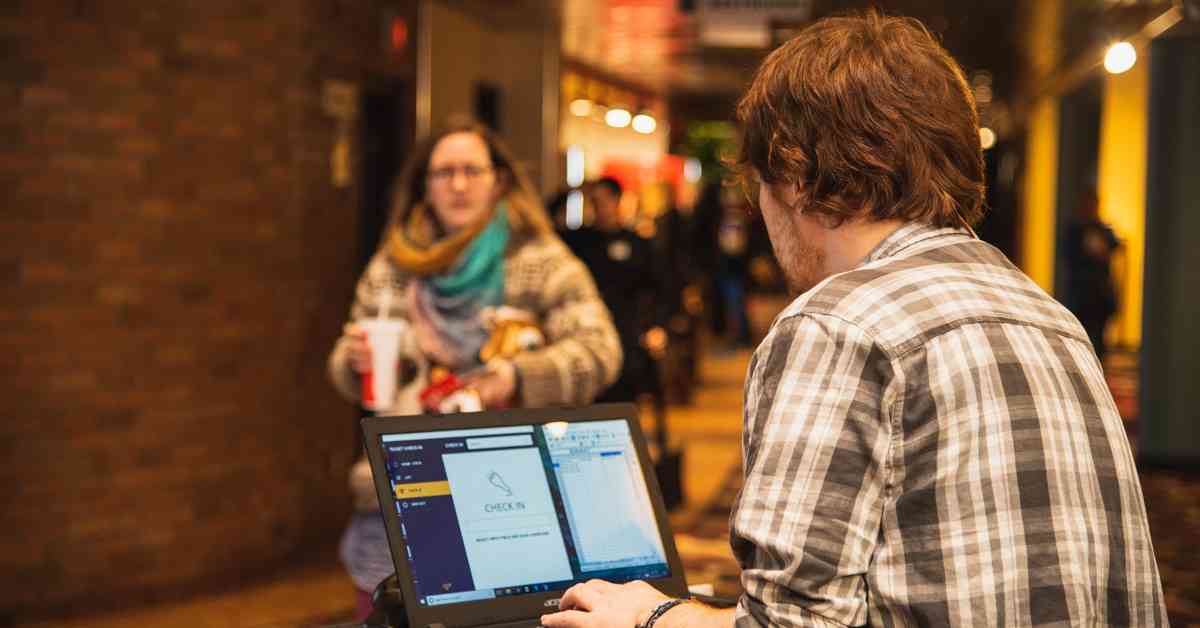
Chatbots for Tourist Interaction
Another recent advancement in the tourist industry is the development of chatbots. Chatbots are AI-powered conversational interfaces that can interact with tourists, providing information, recommendations, and assistance 24/7.
Chatbots have transformed the way tourists interact with businesses, providing a seamless and personalized experience. For example, chatbots can provide tourists with information on attractions, recommend local restaurants, and help them plan their itinerary.
Overall, the use of AI has revolutionized the tourist industry in Europe, transforming the way tourist destinations are managed and the quality of tourist attractions. With the latest advancements in smart homes, monitoring tools, sensory tools, and chatbots, tourists can enjoy a more personalized and immersive experience, while businesses can improve their efficiency and profitability.
Transforming Tourist Management with AI
AI is changing the way tourist destinations are managed in Europe. AI-powered tools are being used to streamline processes and improve the customer experience. Here are some examples of how AI is being used for tourist management in different European countries:
Italy
Smart Tourism in Italy Italy is using AI to create smart tourism destinations. Smart tourism involves using technology to provide personalized experiences to tourists. For example, AI can analyze data on a tourist’s preferences and suggest activities and locations that match those preferences. In Italy, the city of Florence has implemented an AI-powered chatbot that can help tourists plan their trip and answer their questions. The chatbot is available 24/7 and can be accessed through various messaging apps.
Spain
AI for Customer Service in Spain Spain is using AI to improve customer service in the tourism industry. For example, a Spanish airport has implemented an AI-powered chatbot that can answer passengers’ questions and provide information about flight status, baggage, and other services. The chatbot is available in multiple languages and can be accessed through various channels, including Facebook Messenger and WhatsApp.
Austria
AI for Sustainable Tourism in Austria Austria is using AI to promote sustainable tourism. AI-powered tools are being used to monitor the impact of tourism on the environment and to develop strategies for sustainable tourism. For example, AI can be used to analyze data on tourist behavior and identify areas where sustainability can be improved. Austria is also using AI to create personalized travel itineraries that promote sustainable tourism.
France
AI for Tourism Marketing in France France is using AI to improve tourism marketing. AI-powered tools are being used to analyze data on tourist behavior and preferences and to develop marketing strategies that target specific groups of tourists. For example, AI can be used to analyze social media data to identify trends and target tourists who are interested in specific activities or locations. France is also using AI to create personalized travel itineraries that cater to individual preferences.
Germany
AI for Hotel Management in Germany Germany is using AI to improve hotel management. AI-powered tools are being used to streamline hotel operations and improve the customer experience. For example, AI can be used to automate check-in and check-out processes and to personalize room settings based on a guest’s preferences. AI is also being used to analyze data on guest behavior and preferences to improve service and increase customer satisfaction.
AI is transforming the way tourist destinations are managed in Europe. From personalized travel itineraries to sustainable tourism strategies, AI-powered tools are being used to streamline processes, improve customer service, and promote responsible tourism. As AI technology continues to advance, it will undoubtedly play an even more significant role in the tourism industry.
Career Development
The integration of AI in the tourism industry has led to significant changes in the skills and knowledge that are required of professionals in this field. With the demand for highly-skilled personnel rising, the job market is increasingly seeking candidates with specialized knowledge in AI and related technologies.
AI-related Careers in Tourism
AI’s integration has opened up new opportunities in the tourism sector, such as jobs related to developing and managing AI systems. The following are some of the most common career paths in the AI sector:
- Data Analyst: A data analyst is responsible for collecting, analyzing, and interpreting large sets of data. AI-based data analysis tools can help analysts make sense of large amounts of data more efficiently and accurately.
- Machine Learning Engineer: Machine learning engineers develop and manage the algorithms that enable AI systems to learn and improve automatically. In the tourism sector, they can create systems that help businesses personalize customer experiences or automate certain processes.
- AI Specialist: An AI specialist is responsible for developing and managing AI systems within an organization. They may work with teams of data scientists and engineers to create new AI tools and technologies.
- Chatbot Developer: A chatbot developer creates AI-powered chatbots that can interact with customers and provide personalized service. These chatbots can be used in a variety of tourism-related applications, such as booking services, customer service, and travel recommendations.
Education and Training in AI
To pursue a career in AI in the tourism industry, specialized education and training are required. This includes degrees in computer science, data science, AI, and related fields, as well as specialized courses and certifications in specific AI-related technologies and applications.
Many universities and colleges offer degree programs and courses in AI and related fields. For example, the University of Edinburgh offers a Master’s degree in Artificial Intelligence and its Applications, which covers topics such as natural language processing, machine learning, and intelligent agents.
In addition, many online courses and certifications are available that cover specific AI technologies and applications. For example, IBM offers an AI Engineering Professional Certificate, which covers topics such as data science, machine learning, and deep learning.
Future Outlook
As AI continues to transform the tourism industry, the demand for professionals with AI-related skills will continue to grow. This is especially true in the post-COVID era, where the use of AI and related technologies is likely to play an even more significant role in the recovery and growth of the tourism sector.
The future outlook for AI in the tourism industry is bright. As AI systems become more advanced and sophisticated, they will enable businesses to create more personalized experiences for their customers, streamline operations, and improve overall efficiency. This will lead to increased demand for AI-related careers and job opportunities in the tourism sector.
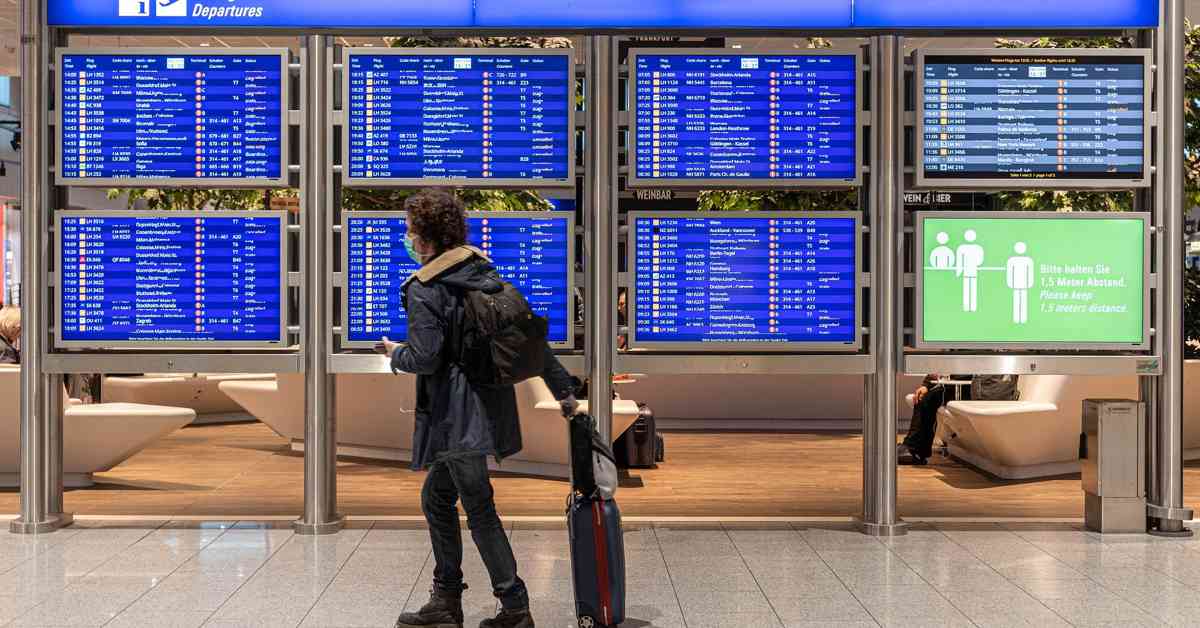
Post-COVID Recovery and the Role of AI in the Tourism Industry
The COVID-19 pandemic has had a profound impact on the tourism industry, bringing the industry to a standstill and leaving many businesses struggling to survive. As the world begins to emerge from the pandemic, it is clear that the industry will need to adapt to the new reality and find new ways to operate. One of the ways that the industry can do this is by leveraging the power of AI.
Impact of COVID-19 on the Tourism Industry
The COVID-19 pandemic has had a devastating impact on the tourism industry. Travel restrictions, lockdowns, and border closures have forced many businesses to shut down, leading to huge job losses and a sharp decline in tourism revenues. The industry has been hit particularly hard in Europe, where tourism is a major contributor to the economy.
The pandemic has also changed the way people travel, with many people now preferring to avoid crowded tourist hotspots and opting for more off-the-beaten-path destinations. This shift in consumer behavior is likely to continue in the post-COVID era, and the tourism industry will need to adapt to this new reality.
How AI Can Help the Tourism Industry Recover
AI can play a critical role in helping the tourism industry recover from the impact of COVID-19. By leveraging the power of AI, businesses in the tourism industry can streamline their operations, offer personalized experiences to customers, and make more data-driven decisions.
One of the areas where AI can have a significant impact is in the management of tourist destinations. By using AI-powered tools, businesses can gain insights into customer behavior and preferences, allowing them to optimize their operations and offer a more personalized experience to their customers. For example, hotels can use AI-powered systems to adjust room lighting, temperature, and music to suit the preferences of individual guests.
Another area where AI can be used to help the tourism industry recover is in marketing and promotion. By using AI-powered tools, businesses can analyze customer data to create more targeted marketing campaigns and promotions. This can help businesses to reach the right customers with the right message, improving the effectiveness of their marketing efforts.
AI can also help businesses in the tourism industry to make more data-driven decisions. By analyzing large amounts of data, businesses can gain insights into customer behavior, market trends, and operational performance. This can help businesses to identify areas for improvement and make more informed decisions about how to allocate resources.
Conclusion
The COVID-19 pandemic has had a devastating impact on the tourism industry in Europe and around the world. However, by leveraging the power of AI, businesses in the industry can adapt to the new reality and find new ways to operate. AI-powered tools can help businesses to streamline their operations, offer personalized experiences to customers, and make more data-driven decisions. As the industry begins to recover from the impact of COVID-19, AI will play a critical role in shaping the future of tourism.

